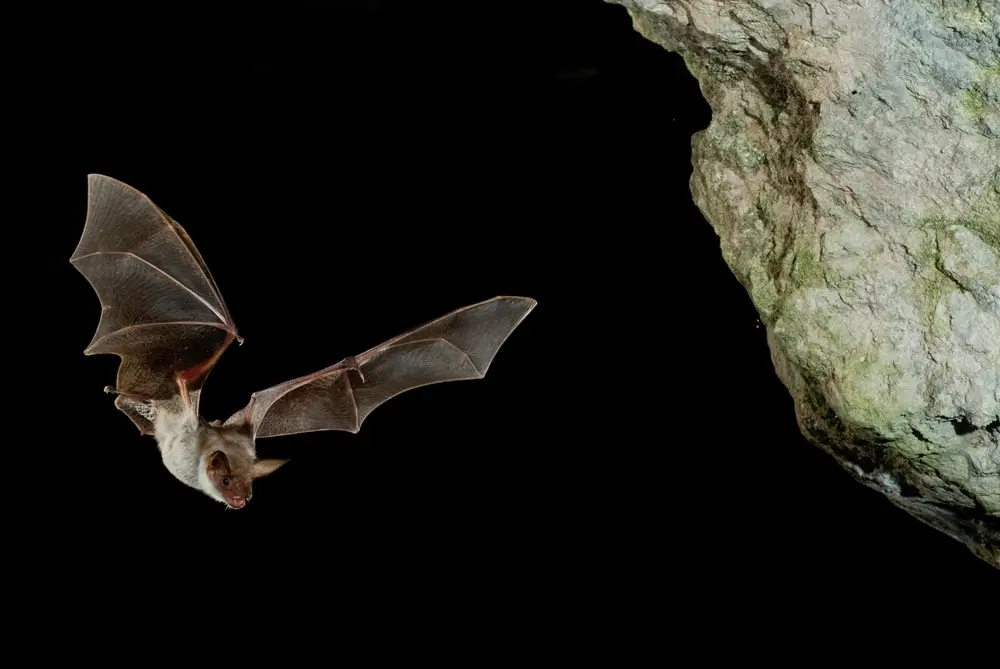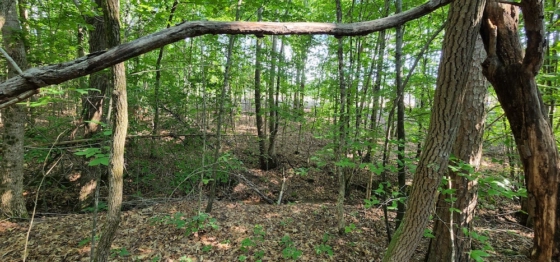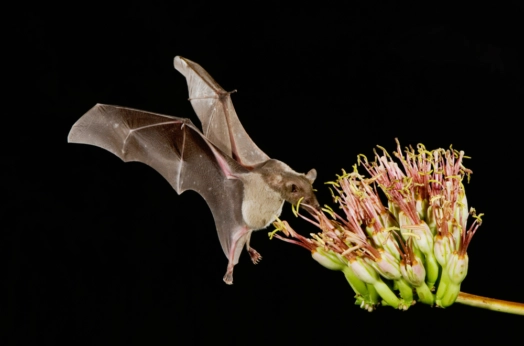Bats help farms, but in general, farms don’t help them back. Some farmers are trying to change that with a more bat-friendly approach.

Bats are a captivating bunch, flying hundreds of miles, pinpointing prey with sonar and leading complex social lives. They’re also voracious predators of insects wreaking havoc on crops such as cotton, cocoa and rice.
By literally wiping out tons of pests every night, bats save US farmers an estimated $3.7 billion annually. Besides the bug carnage, bats also pollinate crops such as coconuts, agave, guava and bananas, disperse seeds and create fertilizer.
However, these little mammals are under attack—more than half of North American bats risk severe population declines over the next 15 years. And agriculture, which destroys foraging and roosting habitat, is one of the greatest threats to bats.
Yet farmers can be important allies for wildlife by using innovative practices to conserve bats. In turn, this mammalian air crew protects and pollinates their fields.
Pests and heirloom produce
“I know a lot of people are kind of freaked out by the bats but they are invaluable in sustainable agriculture—absolutely invaluable,” says Stephanie Miller, owner of Mystic Pine Farm in Virginia, which specializes in organic heirloom crops from the African diaspora.
Her farm is bustling with bat activity for several reasons.
“We don’t obviously use any chemicals because that’s also a main deterrent and that will definitely get rid of your bat population very quickly,” says Miller.
Besides directly poisoning bats, pesticides and insect-resistant crops reduce the abundance of their prey.

A wooded area on Mystic Pine Farm in Virginia. (Photo courtesy of Stephanie Miller)
Miller also maintains oaks on her property to provide roosts for the bats and intentionally supplies food for her winged guests.
“I grow night-blooming plants that attract the bats and give them nectar and feed them,” says Miller. “Also, I grow species of native plants and what I would consider medicinal herbs that they also like to feed off of or attract the food that they eat—things like purple coneflower, yucca and sunflowers.”
Research backs these observations up: Lower-intensity practices such as agroforestry and organic farming support higher bat activity levels and diversity compared to more intensive agriculture.
Factors at the landscape level also come into play.
“You should always leave as much natural habitat as possible around your farms,” says Merlin Tuttle, a bat researcher and founder of Merlin Tuttle’s Bat Conservation. “Where pests do the worst damage is where you have huge monocultures, where for miles and miles you have nothing but corn or soybeans or wheat planted. And in those cases, bats and other natural predators can’t survive the off-season. After you harvest the corn or the wheat, there’s no pests out there to eat.”
In turn, Miller benefits from having bats around.
“I’m using nature, including the bats, to control my pest population,” says Miller. “And bats do a lot of work. They actually pollinate certain crops. They also eat pests that might be an issue and keep those populations under control.”
For instance, bats kill corn earworms, a major pest of popcorn and one of Miller’s main crops.

“I’m using nature, including the bats, to control my pest population,” says Virginia farmer Stephanie Miller. (Photo courtesy of Stephanie Miller)
Pecan protection
While Miller exemplifies a bat-friendly farmer, she’s not alone. Through Merlin Tuttle’s Bat Conservation and Bat Conservation International, pecan farmers are learning how to cut down on pests by installing bat houses.
One example is John Worth Byrd, owner of a sustainable pecan farm in central Texas.
“We have three moth-born pests here, the walnut caterpillar, the pecan nut casebearer and the hickory shuckworm,” says Byrd. “But the bats, their primary food is moths. So, I thought, well that’s great. Some people in Georgia had done it, put bat houses into their pecan orchards. So, I started putting up bat houses.”
Byrd has five species of bats on his property. Some forage in wide open spaces away from their roosts, while others dine locally in the orchard canopy. While all the bats suppress pecan pests, the locavores kill the most.
Byrd uses a couple of strategies to help his bats. Besides putting up bat boxes, he doesn’t spray any pesticides on his property. In addition, if a tree dies in his orchard, he leaves it up.
“A lot of these bats roost in these old dead pecan trees…” says Byrd.
“The best bats were staying in these cavities, not as many numbers like the [Brazilian] free tails in my houses, but they were doing a lot. They were local feeders instead of feeding in the atmosphere.”
Unsurprisingly, all this pest-munching is valuable.
“If people could actually see what bats are doing, they’d be lined up to protect them,” says Tuttle. “It’s estimated by our Parks and Wildlife Department here in Texas that consumption of insect pests is saving Texas farmers approximately $1.4 billion annually.”
Aiding agaves
One of Mexico’s most iconic products has also jumped on the bat conservation bandwagon.
Through the Tequila Interchange Project, tequila and mezcal producers are growing bat-friendly agaves. These spiky plants are normally cloned, but letting some of them flower has several advantages. Night-blooming flowers provide nectar for bats, including an endangered species, the Mexican long-nosed bat. By feeding on the flowers, bats also pollinate them.
Commercial farming of blue agave, used for tequila, has eroded its genetic diversity and increased its susceptibility to disease. For instance, in the 1990s, a combination of bacteria and fungus spread through agave fields, and nearly 25 percent of the crop was abandoned.
This hasn’t gone unnoticed by agave farmers.
“They understand that something is happening,” says Irene Zapata Moran, a doctoral student at the University of Wyoming. “They see that there are more diseases in the crops. And people who have been in this industry all their life, they have told me they remember before that the plants used to be bigger.”

A lesser long-nosed bat feeds on an agave blossom in Arizona. (Photo: Shutterstock)
Bat pollination is seen as a solution, because as opposed to cloning genetically identical plants, sexual reproduction brings in new genes. This could also increase the plant’s ability to adapt to climate change.
However, allowing for natural pollination of agaves involves a direct financial hit for farmers.
Farmers normally cut the flower stalks on the agave to allow the sugar to be concentrated in the core. After harvesting, they use this core for tequila production.
“They’re completely rivals—you cannot have agaves in bloom and tequila from the same plot,” says Zapata Moran.
One solution could be for tequila producers to charge a premium price for bat-friendly products. Offsetting just a portion of their sunken costs could be an effective way to incentivize farmers who may not be motivated to give up some of their crops in the name of biodiversity.
The vast swaths of cropland and pasture blanketing the globe present a golden opportunity for bat conservation. And, with more than 18 percent of species listed as threatened globally, bats need all the help they can get. While sustainable practices require funding, cost-sharing programs, such as those from the USDA Natural Resources Conservation Service, can help farmers. Plus, the payoff is worth it—bats are an eco-friendly solution for many agricultural woes.

